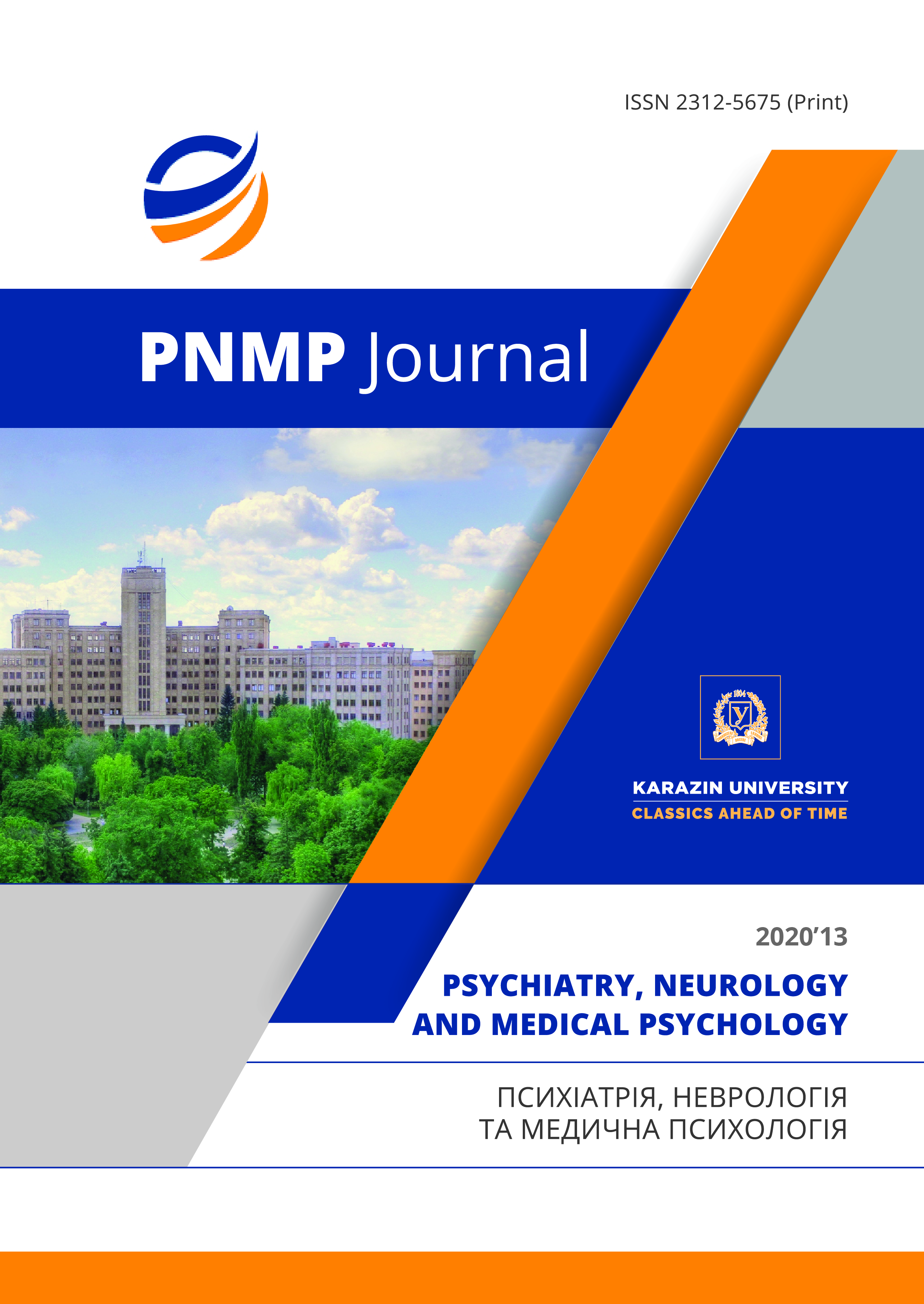Extracranial predictors of recurrent paroxysmal vertigo
Abstract
The cause of recurrent vertigo is vascular compression of the vestibular cochlear nerve (VC PUN) often. The pathogenesis of recurrent vertigo caused by VC PUN in the adult population did not specified.
The aim: to assess the condition of the brachiocephalic vessels in patients with vertigo caused by vascular compression of the vestibular nerve.
Materials and methods: We examined 80 patients with recurrent vertigo caused by VC VN according to neuroimaging, average age (43,09±13,47 years) and 71 healthy subjects, average age (45,85 ± 12,98 years). There were performed clinical and neurological examination, magnetic resonance imaging of the brain, ultrasound duplex scanning of the carotid and vertebral arteries, vestibulometry. We compared the diameter of the right and left, as well as the peak systolic blood flow rate (Vps) for the extracranial segments of the right and left vertebral artery (VA), the intima-media complex (IMC), the presence of extravasal compression, stenotic (>20,0%) and non-stenotic (<20,0%) atherosclerotic lesions of the brachiocephalic arteries.
Results: In patients with VC VN (on MRI) and signs of latent vestibular dysfunction (VD) in the interictal period is significantly dominated by the tortuosity of VA (χ2 =22,16, p <0,001), atherosclerotic lesion of the arteries (χ2=2,77, p=0,091), extravascular compression of VA (χ2=6,04, p <0,014), VA small diameter, hypoplasia of VA (χ2=5,86, p <0,016) compared to the control group. Statistically significant correlation between IMC-right and right VA diameter, rs=0,42, p=0,0007, between Vps and Vps from right to left, rs=0,39, p=0,001, between IMC on the left and right PA diameter, rs=0,25, p=0,04. Results of the ROC analysis had established: the Vps VA right >40 cm/s probability of identification due to VC VN is 73,1%, the Vps VA left >44 cm/s the probability of detecting VD is 75,0%, indicating high diagnostic value of this indicator in the differential diagnosis of VD, due to the VC VN.
Downloads
References
Alekseeva N.S. Atmosphere. Nervous disease. 2005; 1: 20-24.
Savitz S.I., Caplan L.R. Vertebrobasilar Disease. N Engl Journal Med. 2005, no. 352, pp. 2618–2626.
Jannetta P.J. Neurovascular cross-compression in patients with hyperactive dysfunction symptoms of the eighth cranial nerve. Surg. Forum. 1975, no. 26, pp. 467–469.
Cherchi M. Infrequent causes of disequilibrium in the adult. Otolaryngol. Clin. North Am. 2011, no. 44 (2), pp. 405–414.
Brandt T., Caplan L., Dichqans J., eds. Neurological Disorders: Course and Treatment. 2nd ed. New-York: Elsevier Science. 2003, pp. 139–161.
Likhachev S.A., Marуenko I.P. Vestibular dysfunction: new differential diagnostic criteria. LAP LAMBERT Academic Publishing. 2012.
Lelyuk V.G., Lelyuk S.E. Ultrasonic angiology. 3rd ed., Ext. and revised. Real Time. 2007, 227р.
Akar М., Degirmenci B., Yucel A. et al. An evaluation of internal carotid and cerebral blood flow volume using color duplex sonography in patients with vertebral artery hypoplasia // Eur. J. Radiol. 2005, no. 53, pp. 450—453.
Lozupone E., Di lella G., Gaudino S. Imaging neurovascular conflict: what a radiologist need to know and to report? European Society of Radiology. 2012.
Odinak M.M., Mikhailenko A.A., Ivanov Y.S. et al. Vascular diseases of the brain. St. Petersburg: Hippocrates. 1997. 168 p.
Schmidt E.V. Classification of vascular lesions of the brain and spinal cord. J. neuropathology and psychiatry. S.S. Korsakova. 1985, vol. 85, no. 9, pp. 1281-1288.
Bakhtadze M.A., Galaguza V.N., Sidorskaya N.V. Comparison of peak systolic blood flow velocity along extracranial segments of the vertebral arteries in patients with initial manifestations of cerebrovascular insufficiency in the vertebral-basilar pool and in healthy volunteers/ Manual therapy. 2006, vol. 24, no. 4, pp. 7–12.
Sidorskaya N.V. Duplex scanning of brachiocephalic vessels in the manual therapy clinic Manual therapy. 2002, vol. 7, no. 2, pp. 60–65.
Kamchatnov P.R., Gordeeva T.N., Kabanov А.А. Blood flow in the systems of carotid and vertebral arteries in patients with vertebrobasilar insufficiency syndrome. Modern approaches to the diagnosis and treatment of nervous and mental diseases: Int. conf., SPb. 2000, 300 p.
Zamegrad M.V., Balyazina E.V. Vestibular paroxysm. Neurological. Journal. 2016, no. 2, pp. 68–73.

